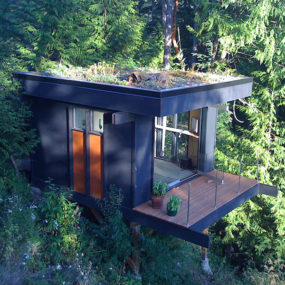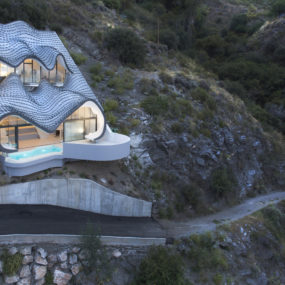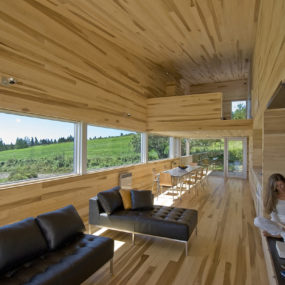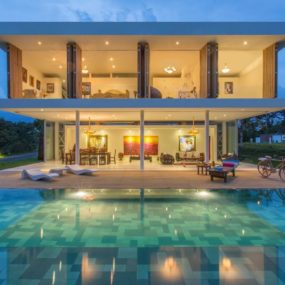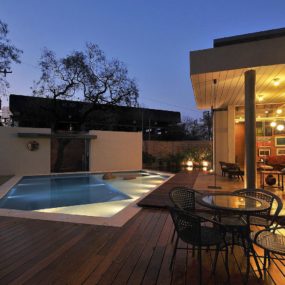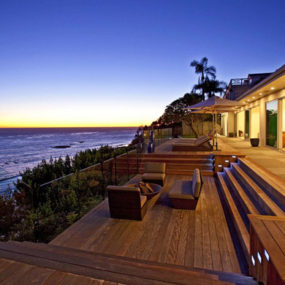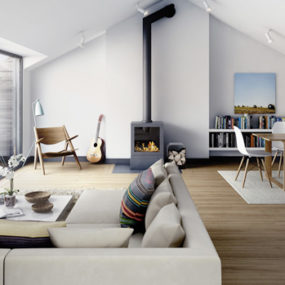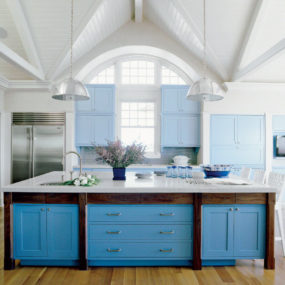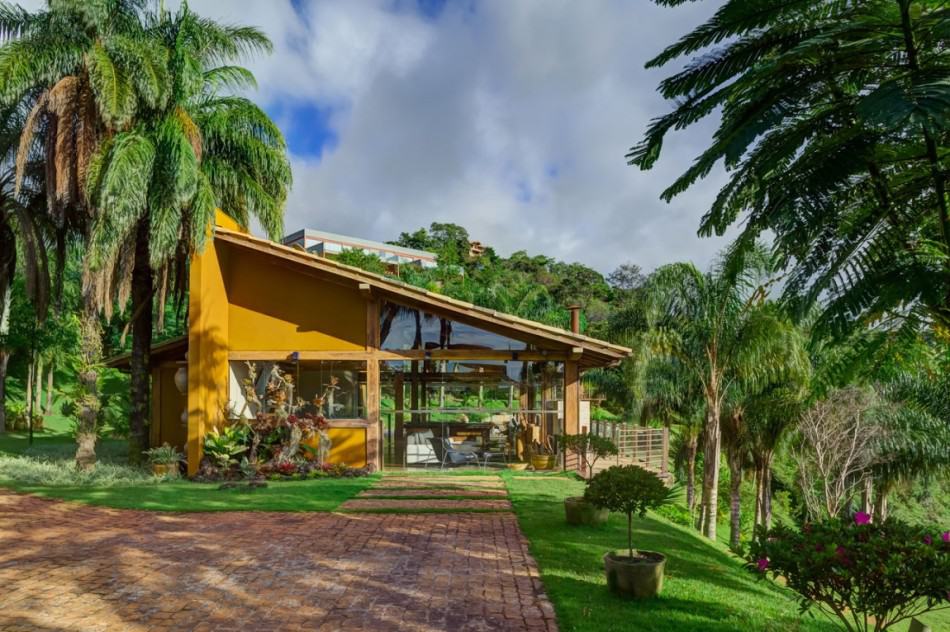
Built on a breathtaking mountainside in Brazil, this fusion of modern architecture and traditional cues comes as a pair. Designed by Sarmento & Melo Arquitetura, this house and guest cottage share a common style, separated only by size and details. The homes effortlessly utilize wood construction and stone landscaping to create an established and permanent environment, while angular contemporary shapes and amenities keep the design up to date. The main house features a pool at its side which is almost larger than the home itself, and a wraparound deck which gives stunning views for miles around. Also setting the master building apart is its gym amenities, with a separate room filled with exercise equipment. While the two homes look very similar, a quick examination reveals which is dominant.
Under the roof of the principal dwelling, the line between indoor and outdoor spaces is walked with finesse. Nearly half of the building’s floorspace is actually technically outdoors, in the form of a spacious dining area with no exterior walls. One you truly enter the inside of the house, a blend of modern shapes and age-old materials presents itself, seamlessly combining the comfortable and the cutting edge. The guest house is more intimate and conventional overall, but its architectural shape is still strikingly modern, taking advantage of the location and the sun overhead to help it seem more spacious.

The first house, which is the main home of the property, is slightly more modern in architecture than the smaller cottage nearby, with simply geometric lines and wide glass area dominating its architecture. A spacious deck along the edge of the house gives view out over the hill which drops below.
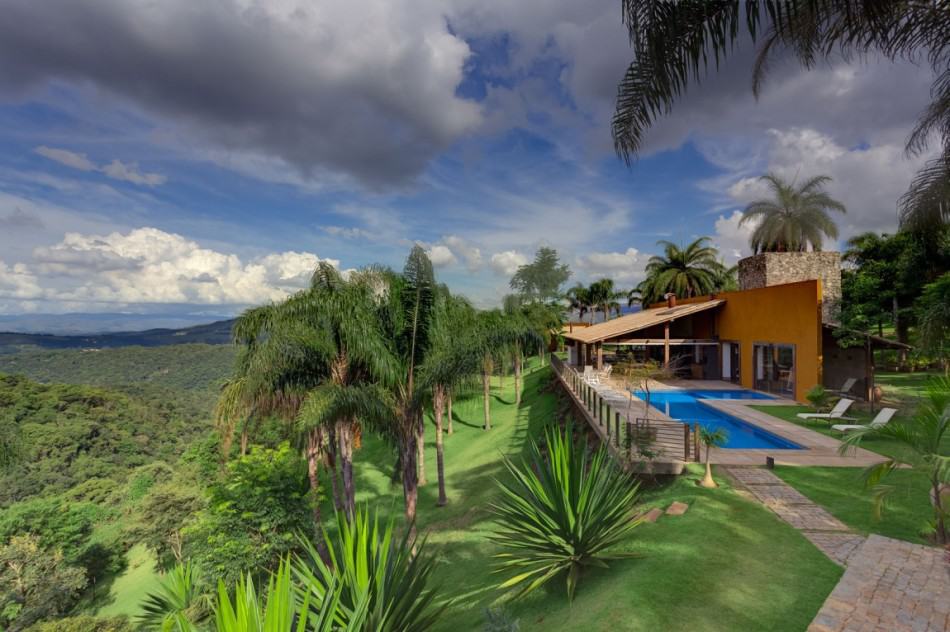
The property occupied by the two homes is breathtaking, surrounded by an unspoiled tropical mountainside. Both the dwellings are tucked into a fairly level section carved out of the hill, encircled by palms and connected to one another by stone pathways which wind through the lot.
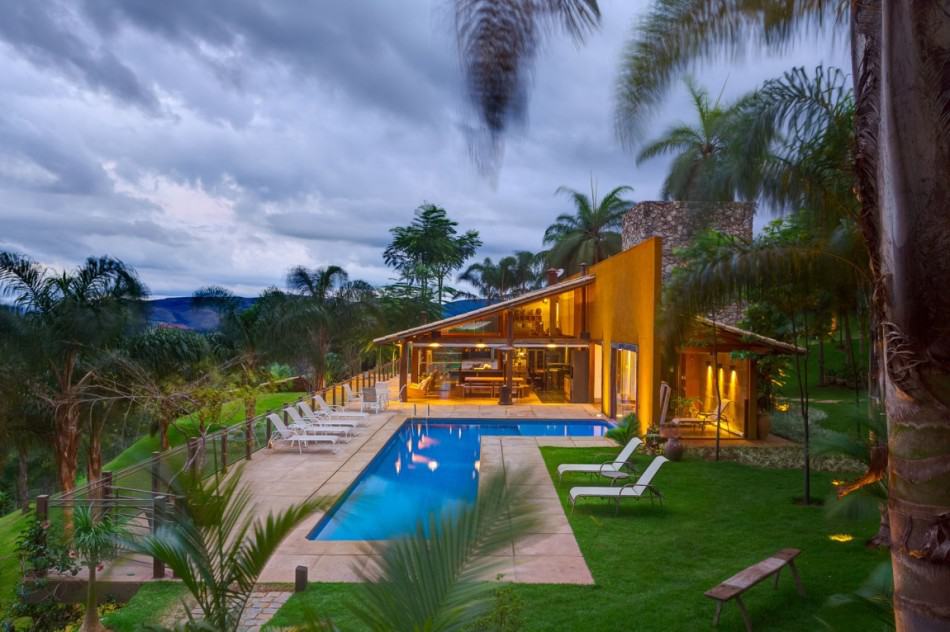
The main home includes a large L-shaped pool at one side, off of which an extension to the dwelling’s deck is built. One thin wall divides the home in two inside and out, providing an endpoint for the roof’s slope on either side.
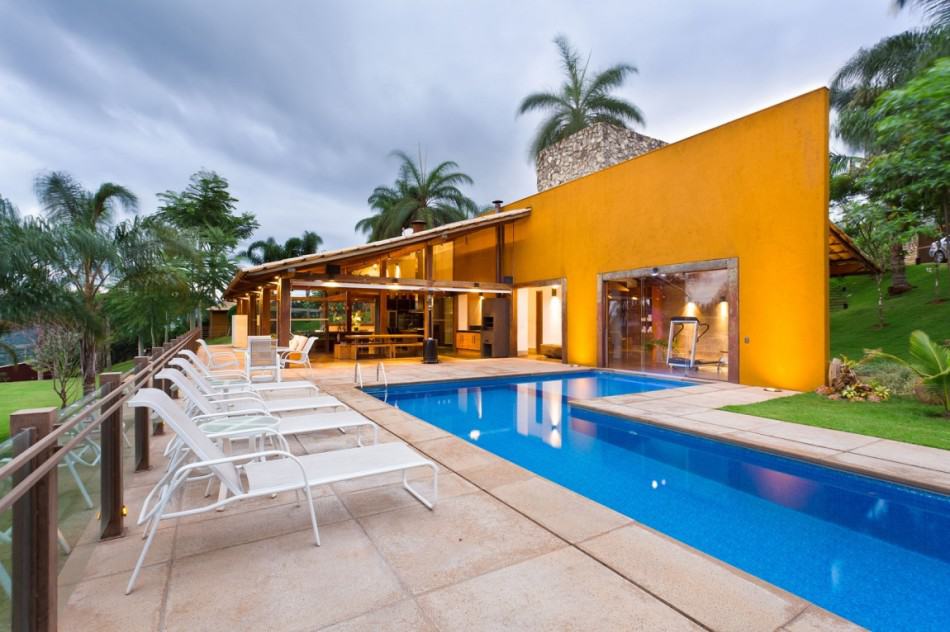
Various amenities are available right next to the pool and its deck, including a private exercise room and a covered outdoor gathering space for socializing and hosting parties. From this angle, the house reveals the most modern design elements which shape it.
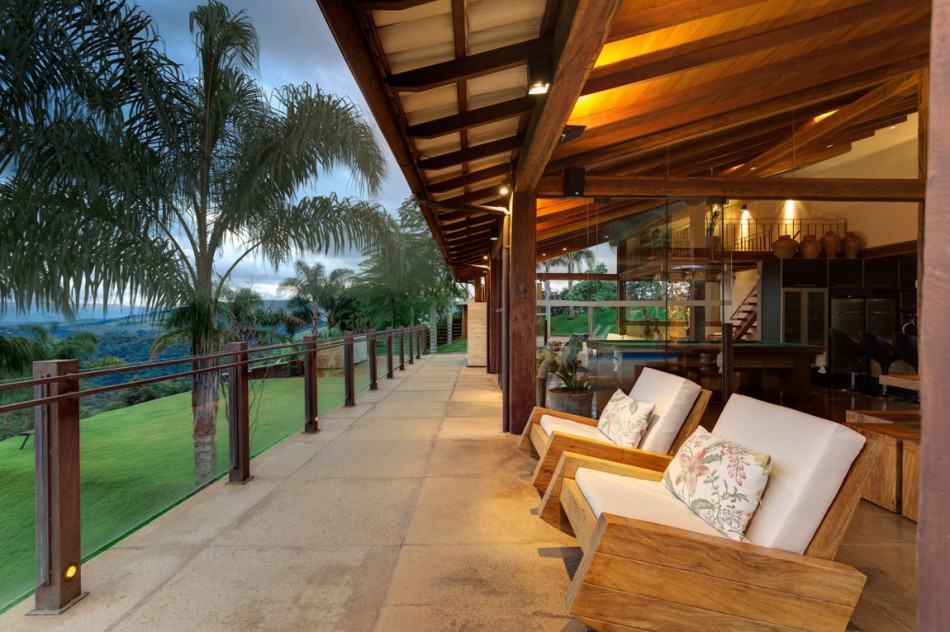
Both houses use wood for most of their structure, as well as for its visual attractiveness and traditionalism. Glass wall panels draped between and under various wood beams provide definition to which parts of the house are inside and which are outside.
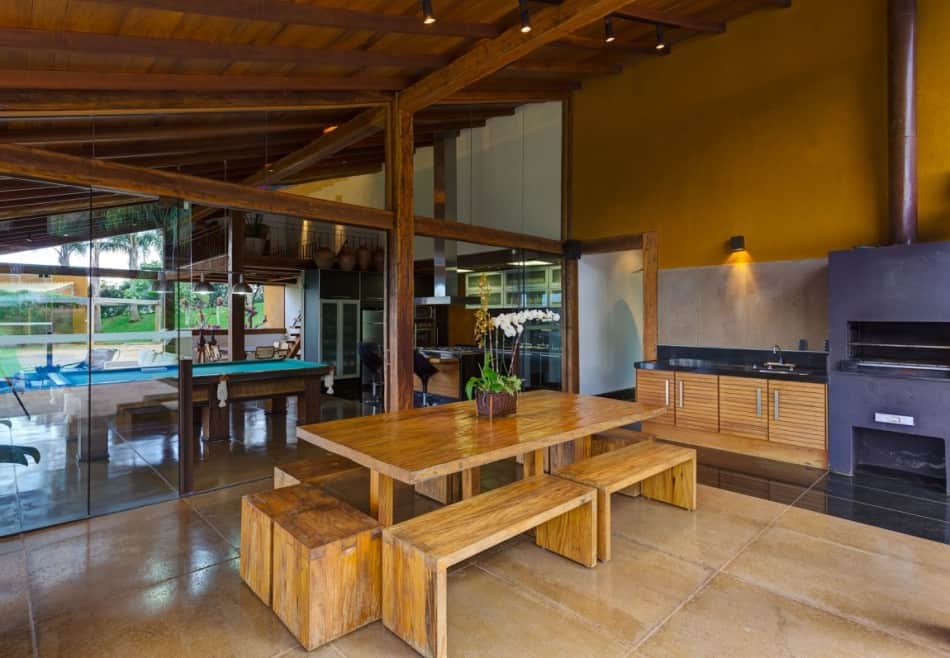
Under the home’s roof next to the pool, a compact outdoor social space allows residents to eat or interact in the fresh air without exposing them to the elements. This area includes a large traditional oven and a small countertop for preparing picnic-style food.
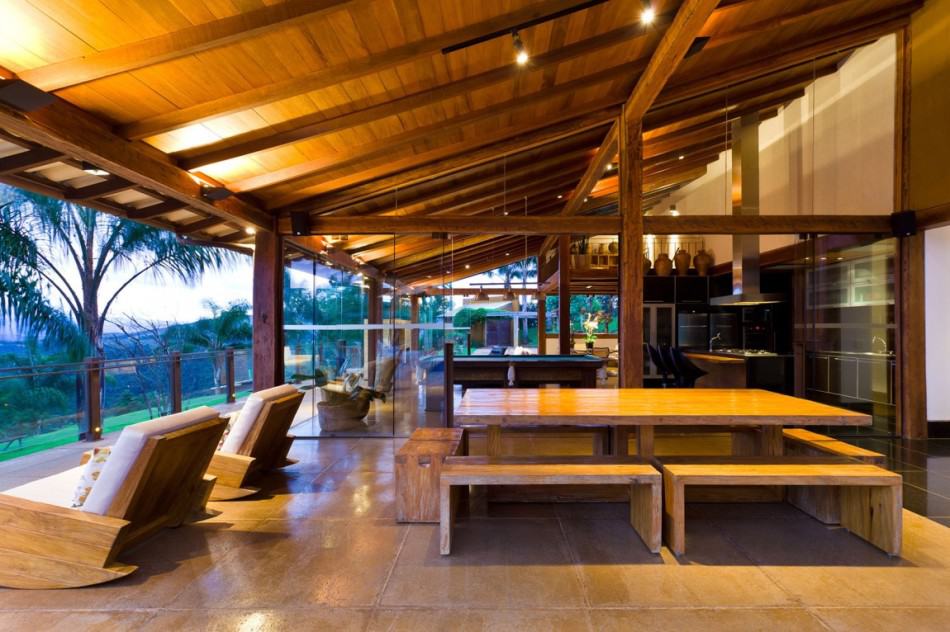
With the exception of a small portion at the middle rear of the interior, all of the home’s spaces open up vertically to the roof overhead, rising as you move backwards through the house to maintain a sense of space even when away from the building’s sources of natural light.
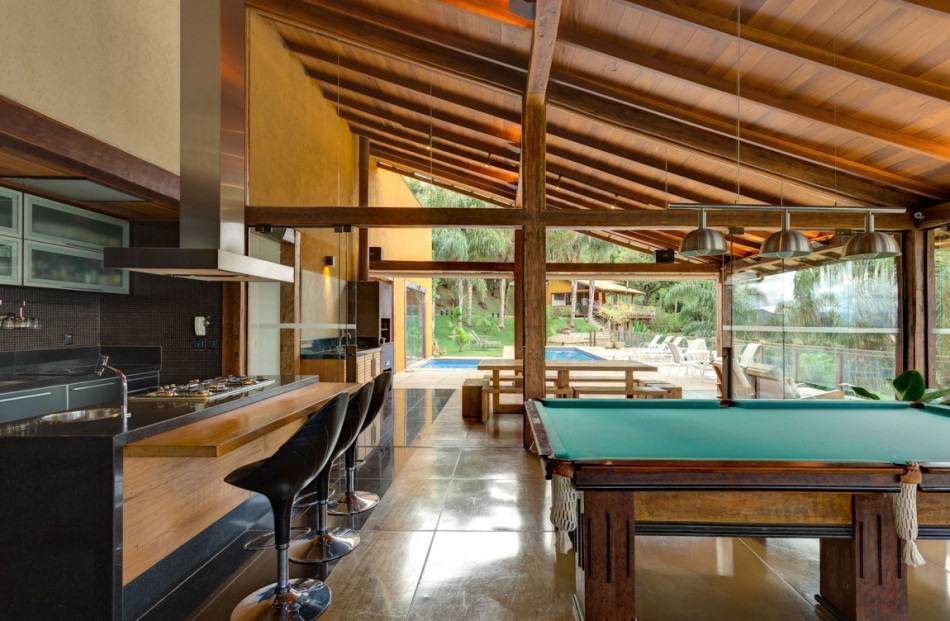
Inside the glass walls, a more formal contemporary kitchen occupies a cutout in the rear wall, behind most of the public indoor space. The kitchen retains the traditional finishes which dominate all over the residence, but packages them in an unmistakably modern design.
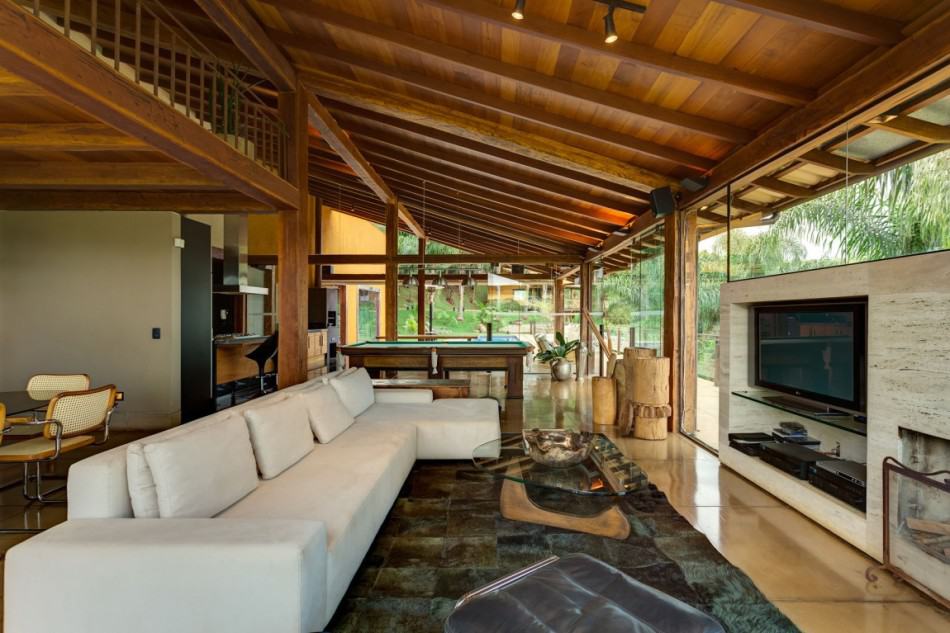
On the far end of the house, an intimate yet family-size living room is framed by a fur carpet and the bottom edge of the second-level bedroom overhead. Underneath the bedroom, a small sitting area further supplements the indoor social space.
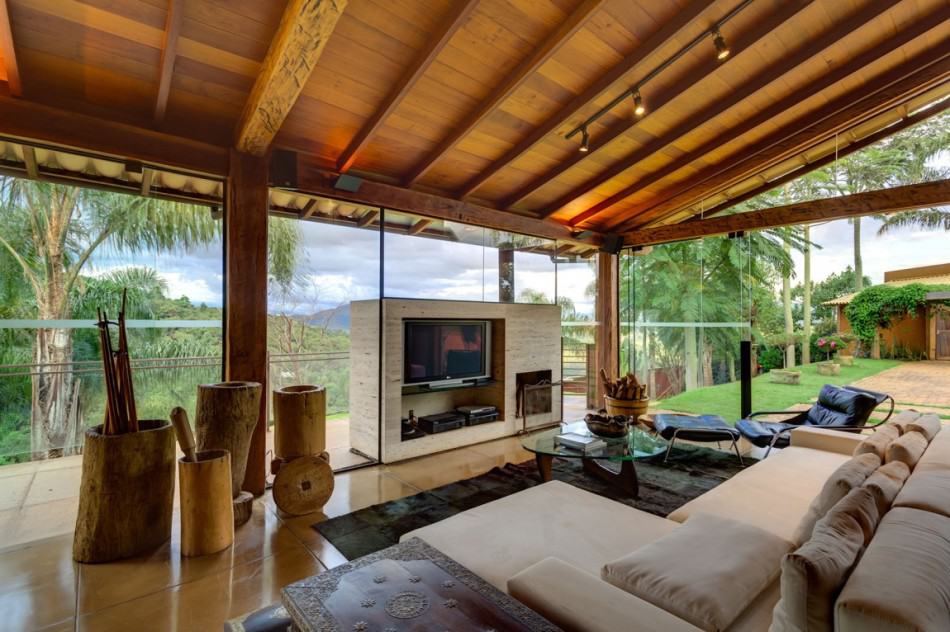
The living room’s entertainment center is built into the home in a very unique fashion, a stone cabinet which extends through the glass walls and outside the home to save space in its compact interior. Above, spot lighting set in line with the roof roof beams provide illumination by night.
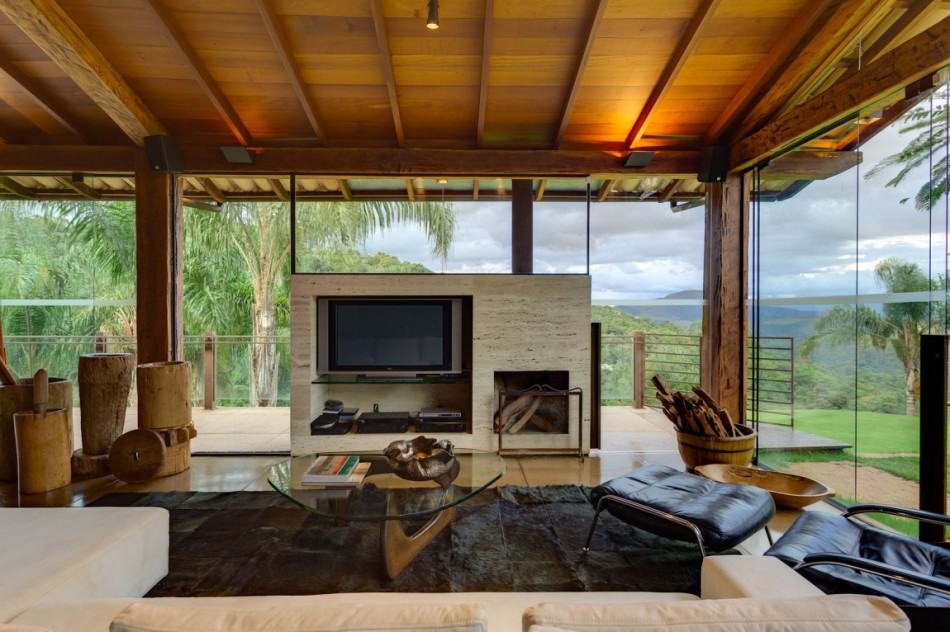
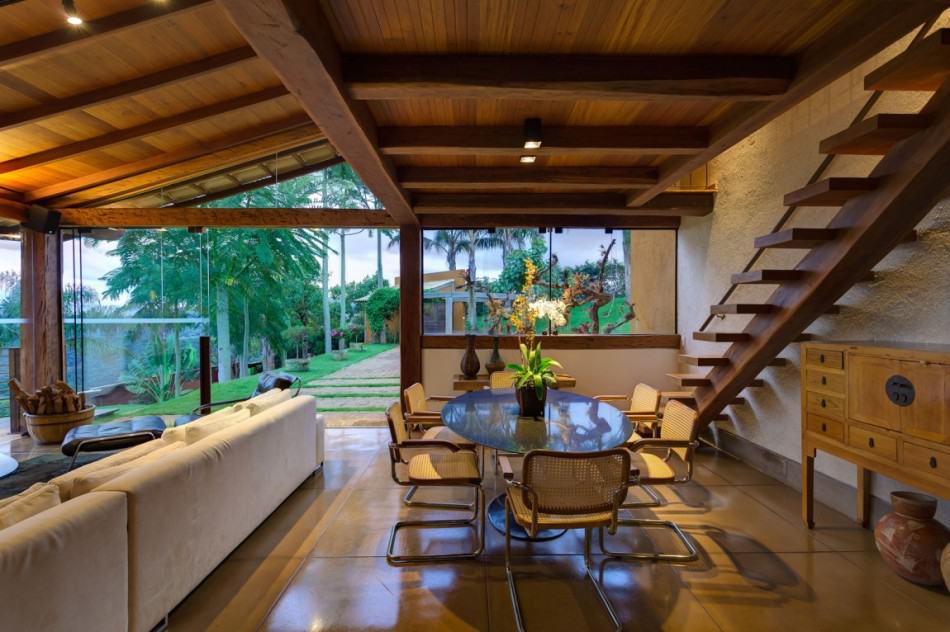
A set of floating-style stairs lead up to the building’s single second-story room, a bedroom that is bordered by two sets of railings and only one formal wall. The railing edges of the space allow the homeowners to monitor the floor below, while the wall is placed at the building’s edge to protect their privacy.
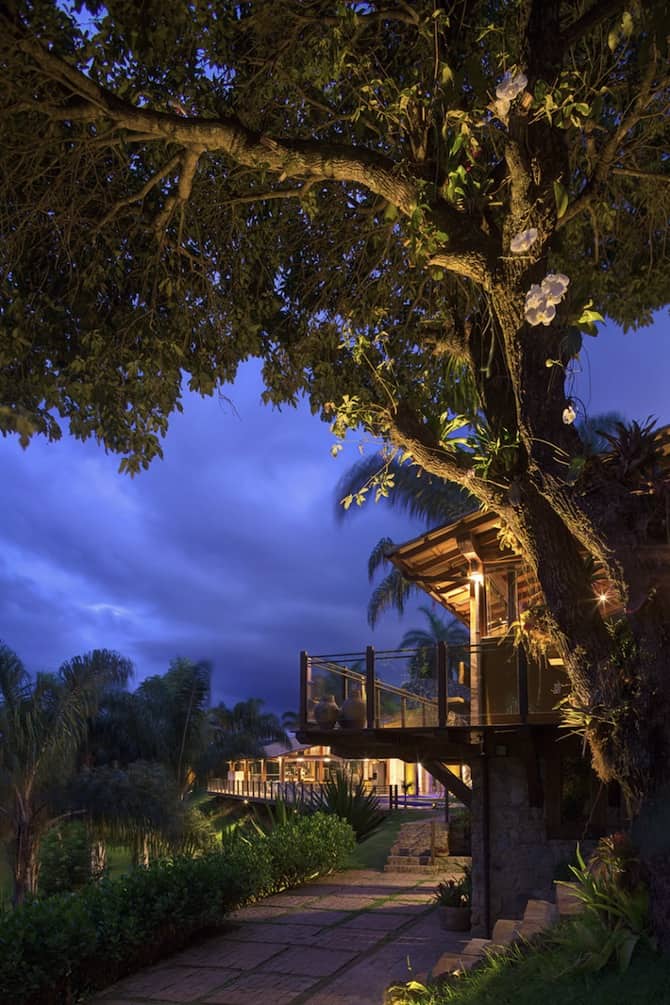
A short walk away from the main house, another smaller dwelling sits slightly lower on the hillside, making it clear that the first house is meant to be the dominant structure of the property.
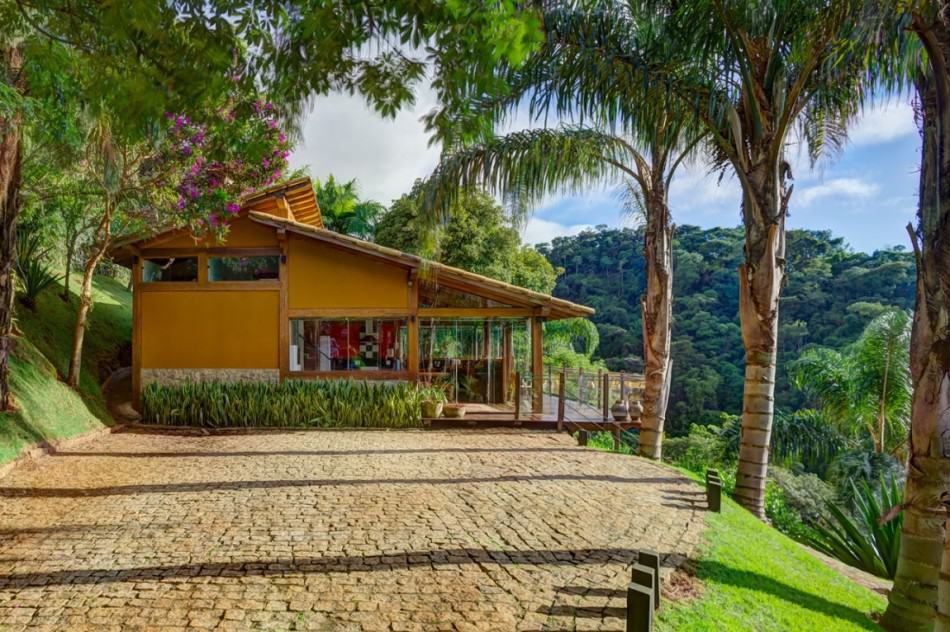
The guest cottage is finished in the same architectural style as the main home, but is more diminutive and more traditional inside than its master dwelling. Instead of a large dividing wall between each part of the roof, the differing slopes simply overlap here.
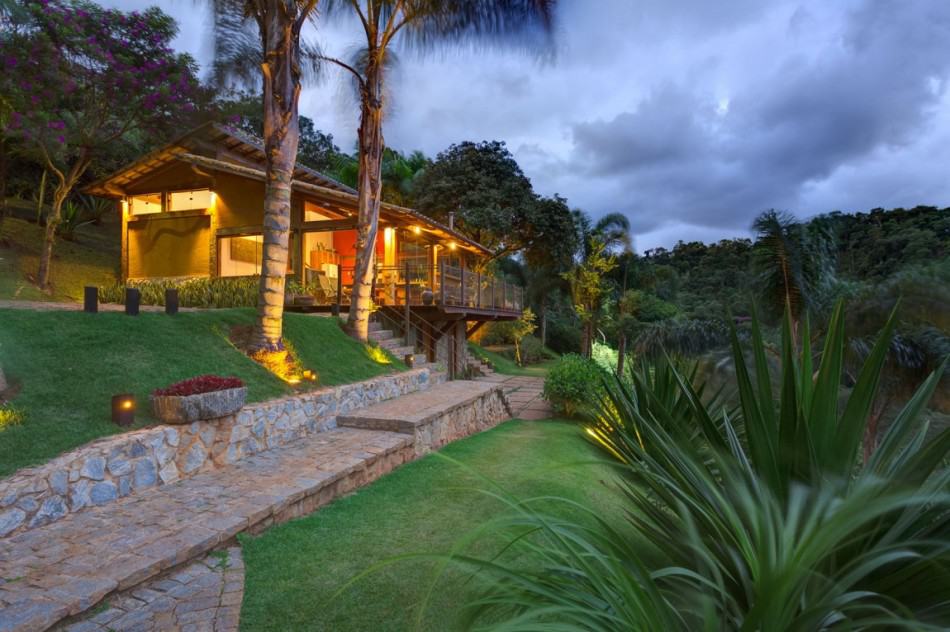
Like the main house, the guests cottage, too, features a spacious outdoor overlook, a raised bedroom, and a similar general interior layout. Beautiful stone paths and driveways give transport between each house and to the edge of the property.
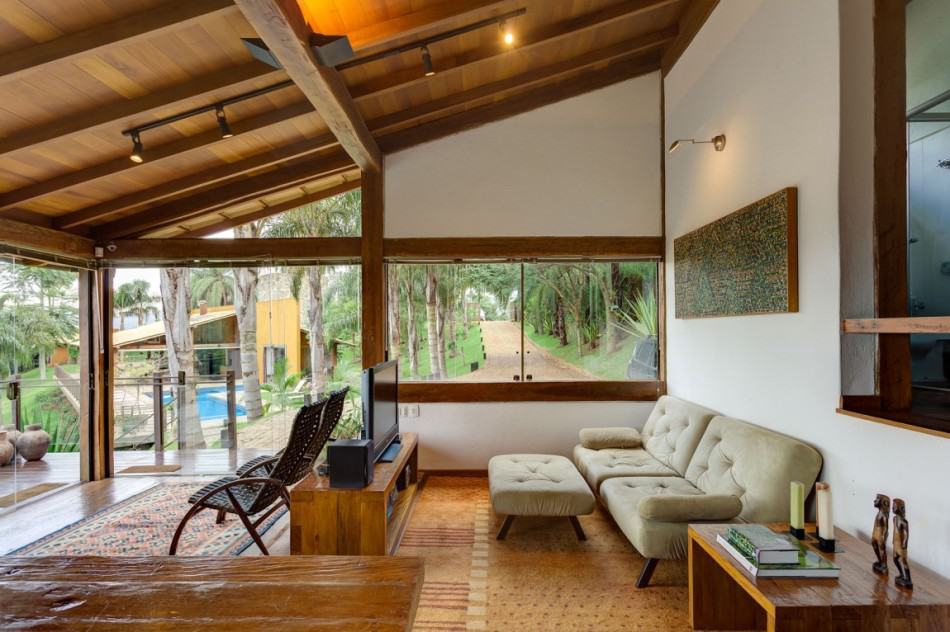
The guest cottage’s living room is divided into two sections, with a portion at the rear for television entertainment and an additional section up front which boasts unobstructed views off the deck and over the mountainside.
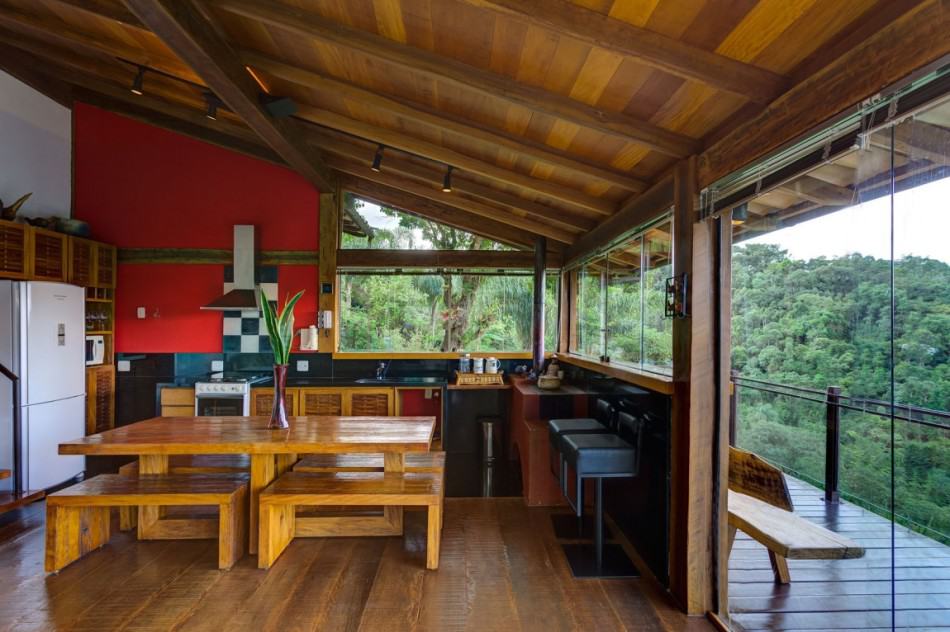
The appliances in this kitchen are more conventional and freestanding than those in the main house, but this smaller dwelling still features a large wooden picnic-style table, a hooded stove, and enough counterspace to cook a large meal. In fact, this kitchen holds an advantage over the other one, since it is placed right next to the building’s front windows.
Sarmento & Melo Arquitetura

